Departmental news
Six £15,000 bursaries awarded to talented engineering students from the West Midlands
Six engineering students from the West Midlands have each won a bursary worth £5000 a year for three years to support their university studies. The awardees were announced today (7 December) at an event at WMG at the University of Warwick to celebrate three successful years of the Lord Bhattacharyya Engineering Education Programme.
The six recipients of the Lord Bhattacharyya Higher Education bursaries were announced by engineer and social entrepreneur Yewande Akinola MBE HonFREng, who was the keynote speaker at the celebration event held at the National Automotive Innovation Centre in Coventry.
The Lord Bhattacharyya Engineering Education Programme aims to widen participation in engineering by attracting young people in the West Midlands from low-income backgrounds and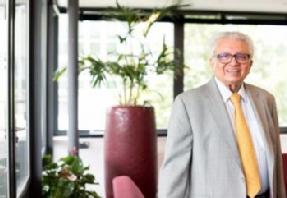 other groups currently underrepresented in engineering. Launched in 2020, the five-year programme is led by the Royal Academy of Engineering in close partnership with WMG. It is funded by the Department Science, Innovation and Technology as a tribute to the late Professor Lord Kumar Bhattacharyya Kt CBE FREng FRS, a renowned engineer, academic, educator and government advisor who established WMG at the University of Warwick in 1980. The Programme provides a comprehensive package of engineering-focused science, technology, engineering and maths (STEM) support, including grants to schools and colleges, teacher networking and CPD opportunities, funded industrial secondments, as well as individual FE and HE student bursaries.
other groups currently underrepresented in engineering. Launched in 2020, the five-year programme is led by the Royal Academy of Engineering in close partnership with WMG. It is funded by the Department Science, Innovation and Technology as a tribute to the late Professor Lord Kumar Bhattacharyya Kt CBE FREng FRS, a renowned engineer, academic, educator and government advisor who established WMG at the University of Warwick in 1980. The Programme provides a comprehensive package of engineering-focused science, technology, engineering and maths (STEM) support, including grants to schools and colleges, teacher networking and CPD opportunities, funded industrial secondments, as well as individual FE and HE student bursaries.
The six bursary recipients are:
- Natasha Daniels, studying civil with environmental engineering at the University of Brighton
- Ecaterina Falinschi, also studying civil with environmental engineering at the University of Brighton
- Saara Hussain, studying general engineering at the University of Warwick
- Wafiq Hussain, studying aeronautical engineering at Imperial College London
- Jamie Phillips, studying mechanical engineering at the University of Plymouth
- Kelly Zheng, studying engineering with a foundation year at the University of Liverpool
Since 2020, a total of over £400,000 has been awarded in bursaries to 28 students.
Over 150 people from schools, colleges and engineering industries in the West Midlands attended the event to celebrate the Lord Bhattacharyya Engineering Education Programme. The event featured secondary schools and further education colleges demonstrating to invited guests some of the projects that have been supported by the Programme and helped to enrich science, technology, engineering and maths teaching and learning.
The day also included inspirational speakers and hands-on activities, including a competitive group challenge delivered by Jaguar Land Rover’s Powertrain team, and an immersive session in TATA Motors’ VR lab and tour of their cutting-edge research facilities. More than ten other locally based engineering employers were also on hand to give students an understanding of the region’s engineering excellence and career opportunities.
Dr Rhys Morgan, Strategic Projects Director for Skills and Inclusion at the Royal Academy of Engineering, said of the celebration: “The energy and enthusiasm shown by the students, and indeed everyone else present at the event was fantastic to witness. The creativity and diversity of thought shown by the students is exactly what West Midlands businesses will need from their future engineers and technicians in order to thrive and contribute to the local and national society and economy.
“My congratulations too to the six students awarded bursaries who have already taken the next step towards becoming engineers and I wish them every success.”
Professor Margaret Low MBE, Director of Outreach and Widening Participation at WMG, said: “The Lord Bhattacharyya Engineering Education Programme has been a valuable support network for local schools and for teams at the University who work in partnership with our community. It has brought together teachers, students, academics, and industrial partners to create inspiring opportunities for all.
“The bursary awards encourage and support students to study engineering at university. These students have demonstrated considerable skill and experience already to have been awarded the bursaries, and it’s clear that these students have bright futures ahead. I wish them well on their engineering journey.”
Applications for the fourth round of Lord Bhattacharyya Higher Education Bursaries will open in March 2024, for students enrolling at university in September 2024.
End
Notes for Editors
1. More information about the six awardees can be found here.
2. The Lord Bhattacharyya HE Bursary Scheme helps students at sixth forms, colleges and academies across the West Midlands prepare for degree-level engineering education. The funding available provides students from low-income households or under-represented communities with a pathway to higher education and therefore encourages the pursuit of careers in the sector. The Scheme not only drives diversity and inclusion throughout the engineering sector, but also ensures that talented students are equipped with the resources needed to develop the latest engineering skills required to access degree-level programmes and ultimately thrive in a fast-paced sector with lots of opportunities.
3. The Royal Academy of Engineering is harnessing the power of engineering to build a sustainable society and an inclusive economy that works for everyone. In collaboration with our Fellows and partners, we’re growing talent and developing skills for the future, driving innovation and building global partnerships, and influencing policy and engaging the public. Together we’re working to tackle the greatest challenges of our age.
4. WMG, University of Warwick, is a world leading research and education group, transforming organisations and driving innovation through a unique combination of collaborative research and development, and pioneering education programmes.
As an international role model for successful partnerships between academia and the private and public sectors, WMG develops advancements nationally and globally, in applied science, technology and engineering, to deliver real impact to economic growth, society and the environment.
WMG’s education programmes focus on lifelong learning of the brightest talent, from the WMG Academies for Young Engineers, degree apprenticeships, undergraduate and postgraduate, through to professional programmes.
An academic department of the University of Warwick, and a centre for the HVM Catapult, WMG was founded by the late Professor Lord Kumar Bhattacharyya in 1980 to help reinvigorate UK manufacturing and improve competitiveness through innovation and skills development.
Media enquiries to: Pippa Cox at the Royal Academy of Engineering Tel. +44 207 766 0745; email: Pippa.Cox@raeng.org.uk
Collaborative project wins prestigious industry award
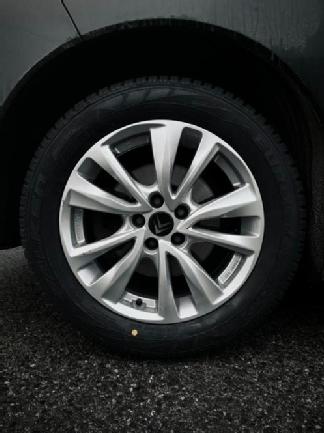 Researchers at WMG at the University of Warwick and the University of Victoria in Canada, have won the inaugural Synthos Rubber Circularity Award.
Researchers at WMG at the University of Warwick and the University of Victoria in Canada, have won the inaugural Synthos Rubber Circularity Award.
The international competition was launched to encourage cutting-edge ideas and solutions that will significantly improve the environmental performance of synthetic rubber-based tyre compounds, aligning with the sustainability objectives of the global automotive and tyre industries.
Synthos, a global leader in synthetic rubber, praised the two universities for their breakthrough technology research concept and global collaborative approach.
Professor of Nanocomposites at WMG, University of Warwick, Chaoying Wan explained: “Rubbers are ubiquitous materials in modern society and have played important roles across transportation; construction; oil and gas; biomedical devices; sports and electronics.
“As the key component to connect the vehicle to the road the performance of the tyre, including its rolling resistance, abrasion resistance and wet grip, directly determines the fuel efficiency, wear emission and safety.
“The emerging EVs and SUVs have raised increasing higher demands for performance that challenge the current technology. This new partnership, with Synthos Synthetic Rubber and the University of Victoria, will enable us to innovate rubber chemistry and develop functional rubber nanocomposites manufacturing technologies to address performance challenges. The new technology will also innovate traditional rubber systems to be actively recyclable.”
Matteo Marchisio, Vice President, Synthetic Rubber, stressed the importance of investing in research and development of sustainable rubber and tyre materials. “We are very proud of our diverse group of exceptional and talented scientists that make up the Synthos Rubber R&D team. Together with the University of Warwick and the University of Victoria, we see an exciting future in expanding our product development horizons. I firmly believe that by fostering innovation and collaborating with the brightest minds in scientific research, we move not only ourselves but also the entire value chain closer to our goal of carbon neutrality by 2050.”
Synthos Synthetic Rubber R&D Director Dr. Malte Wohlfahrt added, “We congratulate the University of Warwick and the University of Victoria for presenting an impressive research concept that we believe is the best fit for us. However, I also want to acknowledge the excellence of many other entries we received. The Synthos Rubber Circularity Award isn't just about crowning a winner; it's about advancing a culture of innovation. Therefore, we intend to collaborate with and invest in some of the other standout scientists and institutes we’ve had the honor to engage with. Overall, this award has sparked immense inspiration across our entire rubber business and given us much food for thought.”
The university collaborators will receive a three-year funding package to support a dedicated research team. They will also be provided with Synthos rubber materials and access to its state-of-the-art facilities. In addition, scientists from both institutions and Synthos will form a project team to work closely together and leverage the capabilities of all parties in a way that maximises the value of the collaboration to the tyre industry.
Find out more about Nanocomposites research at WMG here: Nanocomposites (warwick.ac.uk)
University of Warwick teams up with Ca’ Foscari University in Venice to create museum exhibitions of the future
The University of Warwick is collaborating with Ca' Foscari University of Venice to analyse Roman artefacts in a history project which could change the face of museums for the 21st century.
Warwick is working with historians at Ca’ Foscari to scan and analyse artefacts from ancient Roman and pre-Roman Venice, including in 3D and VR forms.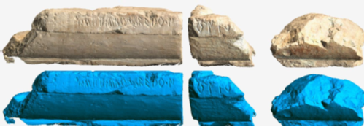
Researchers hope that these artefacts, scanned into 3D and virtual reality (VR), could revolutionise how people experience historical items, including in museums.
Rather than studying items in glass cases, artefacts could instead be scanned and produced using 3D printing or VR technology so visitors can hold and experience history in a whole new way.
This is especially vital when the items themselves are fragile or extremely old, meaning the originals can’t be held or examined by the public.
The collaboration between Warwick and Ca’ Foscari is focused on over 30 items related to religion from the Roman settlement of Altinum – the ancestor of the city of Venice.
Altinum is larger than Pompeii but remains mostly unexcavated, with researchers suggesting a trove of artefacts may be there waiting to be discovered.
The items themselves are from the Roman period and before, including from the Venetii natives who were assimilated into the Roman Empire over centuries.
The artefacts are being analysed by historians at Ca’ Foscari, with engineers at Warwick using cutting edge imaging technology to scan the items in incredibly high definition.
This helps historians read writing from the period and is especially vital when some artefacts have been damaged or are fragmented.
Academics at Warwick and Ca’ Foscari presented their findings at a conference in Venice on Friday (24th November), highlighting the potential of the combined arts knowledge of Ca ‘Foscari and the technology of WMG.
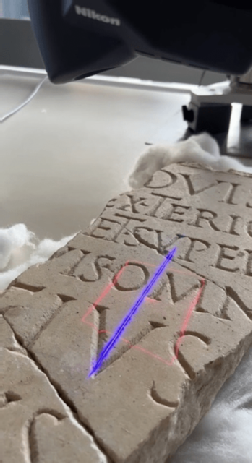 Professor Mark Williams, Head of the Centre for Imaging, Metrology and Additive Technology (CiMAT) at WMG commented: “This is an excellent example of universities working together, including across the arts and sciences. This scanning technology has truly exciting possibilities, including for the future of historical learning and we were delighted to be able to assist our Venetian colleagues in bringing a small section of their history to life”.
Professor Mark Williams, Head of the Centre for Imaging, Metrology and Additive Technology (CiMAT) at WMG commented: “This is an excellent example of universities working together, including across the arts and sciences. This scanning technology has truly exciting possibilities, including for the future of historical learning and we were delighted to be able to assist our Venetian colleagues in bringing a small section of their history to life”.
Associate Professor Lorenzo Calvelli, a historian at Ca’ Foscari University, said: “These artefacts represent the very beginnings of Venice from over two millennia ago, and we are very pleased to be able to bring this history to a wider audience, both here in Italy and in the UK.
“It has been excellent to meet and collaborate with colleagues from Warwick, and I am very excited about our future plans to dive deeper into the treasure trove of artefacts that is waiting for us in Altinum”.
Altinum developed over the course of the Roman Empire into a booming trading hub, particularly know for valuable amber and horses which were prized across Europe. Eventually, refugees from Altinum are believed to have contributed to the founding of Venice in the wake of the fall of the Roman Empire.
Professor Rachel Moseley, Chair of the Faculty of Arts at Warwick, commented: “This is an excellent example of science and the arts working together to create exciting new possibilities.
“Every day, we see scientific advances allowing us to delve deeper into history in a way which recently we would have thought was impossible. Equally, the arts give science that grounding and philosophy to make these advances tangible to the public.
“I’m delighted that our new base of Warwick Venice Centre has brought all these excellent researchers together and is already encouraging collaboration in a hugely positive way.”
Millions awarded to University of Warwick to turbocharge UK’s battery production
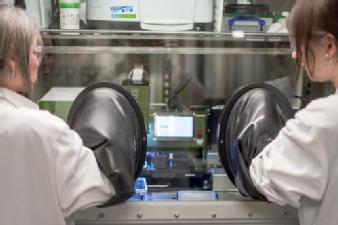 The University of Warwick has been awarded millions of pounds to boost British production of crucial materials for electric car batteries.
The University of Warwick has been awarded millions of pounds to boost British production of crucial materials for electric car batteries.
The £12 million in funding has been awarded by the Faraday Battery Challenge to the High Value Manufacturing Catapult at WMG at the University of Warwick, and CPI at NETPark (North East Technology Park), in County Durham.
It will be used to create the new Advanced Materials Battery Industrialisation Centre (AMBIC).
The Centre will bridge the gap between academic research and battery production and will focus on how batteries can be made to work more efficiently, as well as on equipment and skills development.
The Centre is needed to help the UK develop the electric vehicle batteries of the future, with reduced costs, more sustainable materials and improved performance.
Electric vehicle batteries make up around half the cost of a new electric vehicle, so reducing the cost of their production is crucial to lowering the cost of EVs to parity with combustion engine vehicles.
The funds are part of a wider investment strategy by the Faraday Battery Challenge and the High Value Manufacturing Catapult to ramp up Britain’s battery production and infrastructure to boost the UK’s domestic battery supply chain.
Professor David Greenwood, CEO of the WMG High Value Manufacturing Catapult Centre said: “Cathode and anode active materials make up more than 50% of the value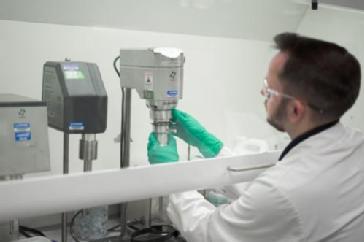 of an automotive battery cell.
of an automotive battery cell.
“For the UK to take its great academic research into production, and to capture the billions of pounds of resulting economic value in the UK, we need facilities which allow Britain to scale up and fully evaluate new materials. This investment, alongside the combined skillsets of CPI and WMG will provide that capability for the UK.”
The funds are specifically to help turbocharge the scale up of battery materials manufacturing within the UK. Only by producing batteries on a wider scale domestically can the EV industry make sure there is no bottleneck in supply and demand. By strengthening UK supply chains of battery materials, WMG is working with UKBIC and others to create a more resilient supply chain.
Thomas Bartlett, Challenge Deputy Director for the Faraday Battery Challenge, said: “AMBIC will bring together two emerging regions of battery innovation and manufacturing; the North-East and Midlands, under one facility to de-risk and accelerate battery materials scale up in the UK.
“Through the Faraday Battery Challenge’s £12m investment in the High Value Manufacturing Catapult we will establish a truly world-class facility to support the growth of a battery materials supply chain. With AMBIC and previous investments in cell, module and pack scale-up at UKBIC and R&D in the wider ecosystem, the UK will now be in a position to support businesses from “powder to pack” and from lab to commercial scales.”
Katherine Bennett, CEO of the High Value Manufacturing Catapult, said: “The next generation of battery technologies are critical to the green energy transition and a major opportunity for UK manufacturing. Realising that potential will require combining our collective expertise and this investment from the Faraday Battery Challenge is a brilliant example of that in action.
“In CPI and WMG, the Advanced Materials Battery Industrialisation Centre has two centres that are at the very forefront of chemical processing and battery cell development; together they can turbo charge battery materials scale-up.”
Frank Millar, Chief Executive Officer at CPI, said: “The Advanced Materials Batteries Industrialisation Centre will enhance the UK’s existing competitive advantages in batteries technology, and it stands to become a catalyst for the UK to address some of the biggest challenges we face as a nation. By giving innovators the opportunity to harness our expertise we can tackle issues such as climate change, while growing a sector that will be vital to the future of the economy.”
Conference run by WMG students inspires and empowers women in cyber security
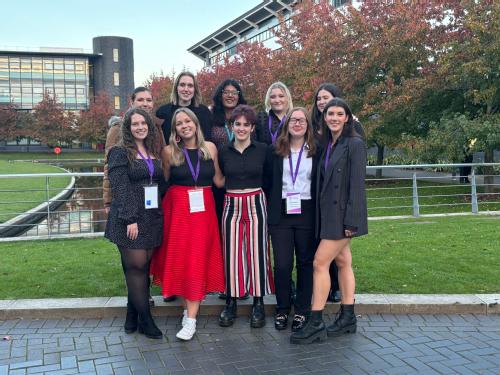 WMG students put diversity and inclusion in the spotlight at The CyberWomen Conference 2023 last month. With over 200 industry professionals, academics, and students coming together to learn, network, and collaborate, the second annual conference was a resounding success.
WMG students put diversity and inclusion in the spotlight at The CyberWomen Conference 2023 last month. With over 200 industry professionals, academics, and students coming together to learn, network, and collaborate, the second annual conference was a resounding success.
This year the Conference was jointly organised by two branches of CyberWomen Groups Community Interest Company (CIC), CyberWomen@Warwick and CyberWomen@Coventry. CyberWomen@Warwick is a student-led initiative, founded by staff at WMG’s Cyber Security Centre in collaboration with students on WMG’s Cyber Security undergraduate and postgraduate programmes. The initiative aims to inspire more women into the cyber security industry and promote inclusivity and positive change within STEM.
The Conference welcomed cyber security experts from across the UK, including Chani Simms, Illyana Mullins, Vanessa Eyles, Janette Bonar Law, and Matt Treadwell, who shared insights and facilitated interactive workshops, providing attendees with a chance to delve deeper into the cyber security industry.
Alongside inspiring talks, the Conference also offered an Opportunities Hub to connect non-profit organisations with students and industry professionals, showcasing the diverse opportunities within the cyber security sector.
Elise Ghent, BSc Cyber Security student and President of CyberWomen@Warwick, said: “It was an amazing day, a really great turnout, and hopefully more eyes on why diversity in cyber security is important. A big thank you to everyone that attended, as well as the support that we have had along the way from so many different people.”
To keep the audience on their toes, prizes (sponsored by cyber security training platform, TryHackMe) were up for grabs through several social media competitions.
Building on the achievements of the inaugural CyberWomen@Warwick Conference, the 2023 event represents another step forward in promoting diversity, knowledge, and collaboration within the cyber security community.
Dr Elizabeth Titis, Assistant Professor and Academic Lead for CyberWomen@Warwick, said “I am extremely proud of CyberWomen@Warwick. I have been involved in this fantastic initiative from the outset and have seen it grow exponentially. This event is evidence that with appropriate support our girls can do absolutely remarkable things!
"Congratulations to all the students and staff involved who together worked on CyberWomen@Warwick to address the gender gap in cyber security by creating long lasting career choices for women."
New book published by WMG duo to tackle meaningful game design
Congratulations to Assistant Professor in Technology Management and Systems Engineering, Dr Devon Allcoat; and Head of eLearning, Chris Evans at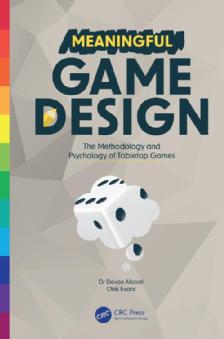 WMG at the University of Warwick, who have co-authored a new text book entitled ‘Meaningful Game Design.’
WMG at the University of Warwick, who have co-authored a new text book entitled ‘Meaningful Game Design.’
Routledge, publisher of professional and academic books, approached Dr Allcoat and Mr Evans after hearing about specific modules that form part of WMG’s e-Business Management and Games Engineering full-time Master’s programmes, and the Institute for Advanced Teaching and Learning's (IATL) undergraduate offerings.
The book provides readers with the tools and methods with which to create effective tabletop games. It covers the design and development process guiding readers through the necessary mechanics, messages, and motivations of games that must be understood in order to build successful tabletop games, including educational games for teaching or training.
It includes chapters on design methodology, narrative, accessibility and playtesting, and aims to support students on game design courses, as well as appealing to designers, teachers and hobbyists.
Dr Allcoat explains: “This book teaches core principals of game design, applicable to all types of games. In our increasingly digital age, it discusses hybrid games and digital elements, but doesn’t forget the human component, also exploring psychology and accessibility.”
Meaningful Game Design is widely available online and in book shops. A 20% discount code EFL03 is available if purchased directly via www.routledge.com. This code expires on 31 December 2023.
Warwick’s Wonka explores the world of pure imagination
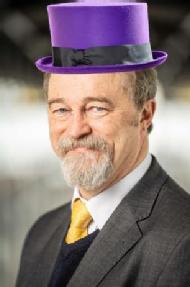 Professor of Visualisation, Alan Chalmers, an expert in flavour simulation at WMG at the University of Warwick, discusses the most famous creations of Willy Wonka ahead of the film premiere this December.
Professor of Visualisation, Alan Chalmers, an expert in flavour simulation at WMG at the University of Warwick, discusses the most famous creations of Willy Wonka ahead of the film premiere this December.
“While we may not have discovered the source of snozzberries, our research invites everyone to wonder about the extraordinary possibilities within the science of flavours” – Professor Chalmers.
Professor Chalmers is the creator of an exciting new flavour experience in a virtual way, with the opportunity to taste almost anything in a sip. The process takes samples of food for analysis, to accurately simulate a real flavour by extracting its tastes, aromas, and mouthfeel. His research has placed him as Warwick’s Willy Wonka.
“We can take a person on a journey through the vast flavour space from the start flavour to a variant that they enjoy”.
Three-course meal bubble-gum:
“Flavour is just the sensation of the taste, aroma and mouthfeel of food or drink in your mouth. If you take the real food or drink and analyse them to extract these components – then they can simply be authentically simulated with UK Food Standards Agency food-safe chemicals.
“So, you take a fork full of roast turkey, gravy, Brussel sprouts and a bit of roast potato … and analyse it with specialist devices to extract exactly what the taste, aroma and mouthfeel components are for this food ensemble. Once you have this “recipe” you simply recreate this exact flavour with the food-safe chemicals – with a specific food-safe chemical for each component, for example, sucrose is used to simulate the sweetness component.
The correct combinations of these chemicals can then be embedded in chewing gum … and voila – as you bite down on the chewing gum – you will experience the same flavour – as if you just had eaten the real roast turkey, gravy, Brussel sprouts and roast potato.”
Lick-able Wallpaper:
“This would be quite straightforward to do. You simply need to embed the food-safe chemicals for each of the components of the desired flavour into the wallpaper – and as it is licked – so the flavour will be perceived.”
The Everlasting-gobstopper:
“I could imagine a ball of eg hard plastic which is impregnated with a sweet flavour. The sweet won’t get smaller - but at some point the sweet flavour will have to be replenished. This will depend how often the gobstopper is sucked and how hard! I could imagine the centre of the plastic ball contains the liquid and this is drawn out as the person sucks. The liquid could be replaced when required.
“Not sure it is a sweet I would want – I think I will stick to chocolate!”
ENDS
Notes to editors
For further information please contact
Bron Mills
bron.mills@warwick.ac.uk
07824540720
The technology was not originally created with inspiration from the infamous chocolatier. The theory behind the invention is that changes in a person's taste and smell senses could be an early indication of Alzheimer’s before signs of memory loss arise. The easy-to-use low-cost dispenser could be used by a nurse as part of an annual health check, in pharmacies, care homes, community centres and even in the home. Researchers hope to achieve UK-wide screening services where members of the public can take a simple smell and taste test. Those who perform poorly can then be referred for further tests which could result in an Alzheimer’s diagnosis.
Professor Chalmers said: “At the moment, people who present with symptoms of memory loss are referred for MRI scans and spinal fluid tests to confirm a diagnosis. By the time memory loss occurs, things are often too late; pioneering drug treatments only perform well in the early stages of degeneration.
WMG hosts Student Project Showcase
The Outreach Team at WMG, University of Warwick was pleased to welcome pupils from local schools to a special Student Project Showcase event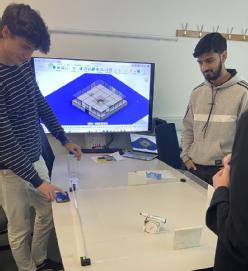 supported by the High Value Manufacturing Catapult.
supported by the High Value Manufacturing Catapult.
Over 100, year 10, students from the WMG Academies for Young Engineers in Coventry and Solihull were invited to the event held at the University of Warwick campus.
The year 10 pupils had a chance to see for themselves the remarkable engineering projects from Warwick Racing; Warwick Rail; Warwick Submarine; Warwick Moto and Warwick Robotics.
CyberWomen@Warwick students also took part. The group of female students strive to empower future talent, with a specific focus on women, in cyber security.
Caroline Cannon, Outreach Project Officer at WMG, who organised the Showcase, explained: “ With these types of events, and across all of our outreach activities, we work with our partners to inspire and empower the next generation of scientists and engineers to pursue careers in STEM in an attempt to close the engineering skills gap.”
Claire Morris, Associate Principal at the WMG Academy for Young Engineers in Solihull, said: “ I have heard nothing but great feedback from Year 10 students, and the staff involved. Thank you Caroline, to you and your team for organising this event, and thanks to the WMG team for making it happen.”
Caroline Cannon added: “ The Showcase was also a good experience for our new cohort of University of Warwick engineering students to build confidence talking about the various projects.”
A University of Warwick student and Warwick Rail team member said: “What I liked most about the event was seeing the students (from the Academies) getting stuck into the activities and thinking critically about the projects.”
WMG support a variety of undergraduate student projects with connections to industry partners. The selection of student-led projects shows the breadth and depth of skills that the students apply both individually and collaboratively as part of a team.
Each project is supported and assisted by PhD students, academics, technicians, and industry sponsors. Dave Cooper, Engineering Technician at WMG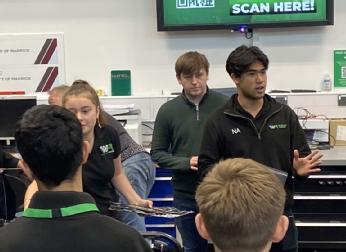 supporting Student Projects said: “Students that work on these projects have had the most amazing opportunities from placements, scholarships and jobs with companies such as McLaren, Mercedes, Red Bull, Norton and Triumph.”
supporting Student Projects said: “Students that work on these projects have had the most amazing opportunities from placements, scholarships and jobs with companies such as McLaren, Mercedes, Red Bull, Norton and Triumph.”
Students gain valuable practical and project management skills with each team member being assigned a role and area of responsibility, from engineering and technical lead to marketing and sales support. The projects develop students; teach time management and risk management; group working; and give practical hands-on experience.
WMG and the High Value Manufacturing Catapult provide some seed funding, but the individual teams are responsible for securing sponsors and raising funds. Feedback from employers suggests that these projects produce some of the most employable graduates in the market.
Find out more about the student projects here: https://warwick.ac.uk/fac/sci/wmg/about/outreach/studentproject/
WMG research helps develop new generation of graphene composites
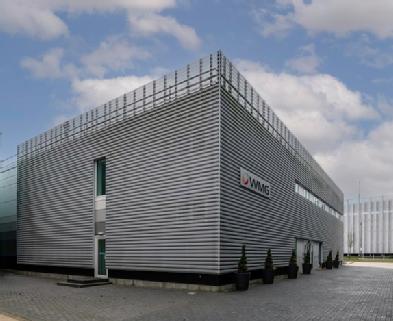 Researchers at WMG, University of Warwick’s, International Institute for Nanocomposites Manufacturing (IINM) have been working with the team at Versarien plc on a new comprehensive portfolio of graphene and related nanomaterial based thermoplastic polymer compounds and masterbatches.
Researchers at WMG, University of Warwick’s, International Institute for Nanocomposites Manufacturing (IINM) have been working with the team at Versarien plc on a new comprehensive portfolio of graphene and related nanomaterial based thermoplastic polymer compounds and masterbatches.
The new PolygreneTM compounds are expected to have potential commercial applications in areas as diverse as sports equipment, construction products, aerospace and automotive components.
Since 2018, Versarien subsidiary 2-DTech Ltd (2DT), Composites UK member, has funded PhD and postdoctoral researchers to understand the use of its Nanene™ graphene powders and other nanomaterials in thermoplastic systems. Dr David Reinoso-Arenas, the first 2DT funded PhD student, with support from the EPSRC Doctoral Training Programme, worked with Versarien’s Nanene™ materials in thermoplastic elastomer (TPE) systems and joined Versarien full-time last year as part of the team at Versarien’s subsidiary Cambridge Graphene Ltd.
Dr David Reinoso-Arenas, explained: “The new PolygreneTM thermoplastics portfolio is a culmination of my PhD research, some of which is due to be published in peer-reviewed journals. Since then we’ve been able to further develop and test these materials using different nanomaterial fillers and process conditions to fully optimise the resulting product performance. My PhD experience at the IINM and WMG was really enjoyable and enabled me to work closely with industry to ensure that the outputs of my research could be validated and have commercial viability.”
David’s PhD was performed under the supervision of Professor Tony McNally, whose team has an established capability in incorporating a wide range of nanomaterials into bulk polymer systems.
Professor Tony McNally, who leads the Nanocomposites Research Group at WMG, University of Warwick, said: “Working with Versarien over the last few years has given the IINM and WMG access to alternative graphene materials that have shown interesting phenomena when blended in these TPE systems. By tuning the nanofiller loading and optimising process conditions, David’s research showed that exceptional gains can be achieved in mechanical properties across the board (tensile strength, modulus, elongation at break, toughness and abrasion resistance) without compromising any properties. The addition of graphene also highlights improvements in polymer processing which may offer lower energy usage and, therefore, improving sustainability.”
Professor McNally continues to work with Versarien by providing a funded PhD position in 2D material based rubber systems, making use of the IINM’s new state of the art rubber processing and testing capabilities With support from the High Value Manufacturing Catapult (HVMC), WMG has established a world class facility for the study of elastomers.
Dr Stephen Hodge, Versarien’s CEO, added: “We look forward to continuing our collaboration with the IINM and WMG in rubber processing and understanding the interactions of our graphene and other 2D materials in these more complex systems, and hope to be able to demonstrate significant benefits that can impact upon real-world applications.”
Find out more and download technical datasheets here: https://versarienproducts.co.uk/thermoplastics
Find out more about WMG’s Nanocomposites research here:https://warwick.ac.uk/fac/sci/wmg/research/materials/nanocomposites/
Expert comment from Professor Siddartha Khastgir
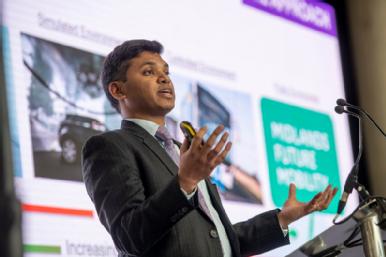 Professor Siddartha Khastgir, Head of Verification and Validation at WMG, University of Warwick, comments on the Government’s plans to introduce the primary legislation for automated vehicles in the upcoming parliamentary session, as announced in the King’s Speech today (Tuesday 7th November).
Professor Siddartha Khastgir, Head of Verification and Validation at WMG, University of Warwick, comments on the Government’s plans to introduce the primary legislation for automated vehicles in the upcoming parliamentary session, as announced in the King’s Speech today (Tuesday 7th November).
Professor Khastgir said: ‘‘We welcome the Government’s decision to introduce the primary legislation on automated vehicles in the King’s Speech today. Following on from the discussions at the AI Safety Summit last week, this very first legislation on AI-powered technology is an important step for the UK to reach its target of rolling out automated cars in 2025.
“Regulation is the key enabler for the safe introduction of automated vehicles on UK roads. Not only does it provide regulatory certainty for the industry, but it is also key to setting high safety thresholds and gaining the public’s trust. We urge the Government to ensure that the regulatory framework is robust and underpinned by strong research outcomes. International and national self-driving standards should be built upon when creating this legislation.
“We also urge the Government to speed up the secondary legislation on automated vehicles to provide more information on the engineering requirements. The Government needs to ensure public views are incorporated into this legislative journey and take future users’ viewpoints into account. As a result, along with the legislation, a public awareness programme should be introduced to ensure an accurate understanding of the capabilities and limitations of this emerging technology. The Government needs to act quickly to be at the forefront of this technology.
“WMG will continue to fully support the Government and the eco-system to develop research and evidence-based self-driving regulation in the UK.’’
Find out more about WMG’s Verification and Validation research here: https://warwick.ac.uk/fac/sci/wmg/research/cav/vandv/
